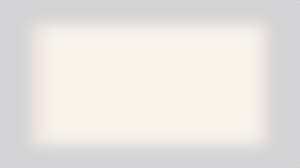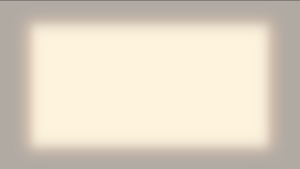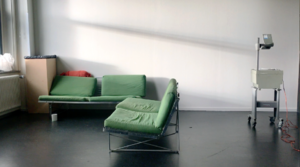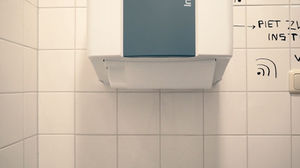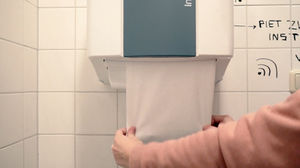The final draft
Project proposal
What?
This project is a development based on my very first research on "boredom" of the second year. It’s a video work that explores the basic and minimalistic way to build the connection between the screen and me. It emphasizes the structure of the film, which contains fixed camera position, flicker effect, repeating and looping. In this work, content is the form, form become content. (fig1)
This work explores how the unattributed feelings slowly appear through the simple structure of the moving image, accompanied by expectation and non-expectation. Furthermore, how small/subtle changes make a big/obvious difference in a seemingly stable and repeating moving image? In this work, the viewers would be constantly anticipating, correcting and re-correcting in their heads by experiencing the given moving images or reality on the screen. It shows the film itself in its purest form, not as an end in itself but as an attempt for me to arrive at a new beginning unhindered by unquestioned notions of “What film is.” Additionally, I see this work as a journey or process.
The work will be shown in both formats of digital camera shooting and computer graphics. The camera part mainly records scenes from the environment surrounding me, those scenes contain small or subtle changes yet in a very slow or repeating process. The computer graphic part explores how abstract graphics create the subtle changes in a moving image format. The work will be ideally exhibited as a 2 or 3 channels video installation.
Arising with a few questions: can these subtle changes happen as well in digitalized moving images? If so, what would it be? If not, what else could those digitalized moving images bring to our eyes with a simple structure? Those would be what computer graphics part mainly focuses on.
Why?
At the beginning of my research of boredom, I realized I was actually finding a way to escape from boredom through looping, repeating process. It seems to be boring by simply doing something repeatedly, however, I somehow started to enjoy it since there are changes in the repeating and slow process. These changes can be very small and subtle yet make a big difference. By doing this project, it can be a deep understanding of how the human brain reacts to moving images and how the thought process can be incited to make the profound philosophical “brainstorming”. What attracts me more is that even the image is literally moving in a quite stable way, however, my mind would slowly create a self-entertainment, like in the Chinese saying – things stay the same, people or their minds change.
I see this project as a self-reflection, it illustrates my personal way of seeing as a human and maker, either objects or scenes. Additionally, it describes how I react to the environment. More precisely, how to “fight back” and furthermore create a self-entertainment when facing a forced monotonous or tedious situation. However, self-entertainment here does not necessarily mean “entertainment”, basically it is to create a connection between mind and objects, it can be an illusion, a meditation, a spiritual experience. It is a process allowing a person to feel connected and related to the objects.
I’d like to explore how to create this self-entertainment in a very simple visual language, how my mind steps to one status from another. Furthermore, to analyze the basic visual elements of the moving image. During the current practice of the project, I also realized the work itself is a medium to be anti-entertainment. Since the internet age is full of interesting yet meaningless entertainment information, the project is a way to drive me to slow down. As the article <Meditation through Simple Forms> says: these simple forms never try to impose a way to think about the world or cinema. Instead they suggest that we should take a closer look at the limitations of our knowledge about the world due to the constraints drawn by our perception and the complexities that we face.
Moreover, I’d like to explore the difference between computer graphic and camera shooting through the project. During the making of tests and experiments of my project, I found the relationship between computer graphic and camera shooting is like creating and accepting. Computer graphic: what’s happening in the screen can be totally controlled by me, thus almost everything can be predicated, what would be shown is more direct to what I want to create or express. In addition, before the visual, I somehow would have a general idea about the content, what the motion is going to be, what objects will appear, what color will be shown, etc. Camera shooting: it seems to be more random and unpredictable even if the position of the camera is fixed.
For example: imagine a camera is recording a window, either there would be a bird flying into the frame, or a plastic bag, that’s not predictable. In that case, camera shooting is more like accepting whatever comes to the frame. However, how much unpredictable space there is in computer graphics becomes another point I would like to find out in this project. It seems to be not so complex in the technical part since everything is somehow “minimalized".
How?
Due to the whole work contains both camera shooting and computer graphics visuals, I would utilize two different methods to make it technically.
Camera shooting mainly utilizes fixed camera position, the camera will record whatever would happen in front of the lens, can be both expected and unexpected. The selected scenes and objects would be from our daily life, thus, it would be challenging the experiences how we see the world, recording and questioning the subtle changes between predictable things and unpredictable things. (fig2)
The computer graphics part would focus on repetition, flickers, virtual materials. As was mentioned, it’s more like creating an opportunity or atmosphere by making digitalized moving images, therefore, I would like to find out how much space is left for randomness, and unexpected senses in simple structured computer graphics. In this part, colors and motions would be minimalized. (fig3)
In addition, l would like to record the environmental sounds in the camera shooting part, the unexpected part about sounds also fascinates me. As for the sound part of computer graphics, more tests and experiments would be required to see if it’s even necessary to add sounds to those graphics.
Timeline
Now -- Dec: Experiments & tests.
Jan -- Mar: Production.
Apr -- May: Finalize & develop.
Relation to a larger context?
The MIT Press & Whitechapel Gallery, [2017], <Boredom, Documents of Contemporary Art>.
Hollis Frampton’s Lemon Analysis—The Nature of Film and Vision
Ways of Seeing, Structural Films: Meditation through Simple Forms
Peter Gidal, Structural Film Anthology, Theory and Definition of Structural/ Materialist Film
Help?
I’ll need help mainly to develop my concept of the project. As Jonathan T. D. Neil says in “Structural Film,” as Technique of History: “the great challenge, then, of the structural film became how to orchestrate duration; how to permit the wandering attention that triggered ontological awareness…and at the same time guide that awareness to a goal.” The simple/minimalistic structure seems to be easy technically, however, how to choose objects and scenes and how to create moving images with a computer which are simple moving formats have become challenging to me.
Relation to previous practice?
I see my final project as a further research and development of my previous practice. In my previous work <Unattributed Stimulations of Objects>, I focused on the unattributed and ambiguous feeling and the connection between me and those objects. However, looking back to that project. For example: the very first inspiration--the towel machine scene (fig4), the basic elements of the scene are: towel, movements of hands, the towel that was pulled down, the towel that was pulled up. There was a time gap between the towel was pulled down and pulled up, time seemed to slow down during the duration of waiting in this gap, and then time suddenly went back to normal speed when it was pulled up. As for my final project, I’d like to develop and spread it out into materializing time, expectation and unexpected. Furthermore, to explore what film is during the process of my final project.

